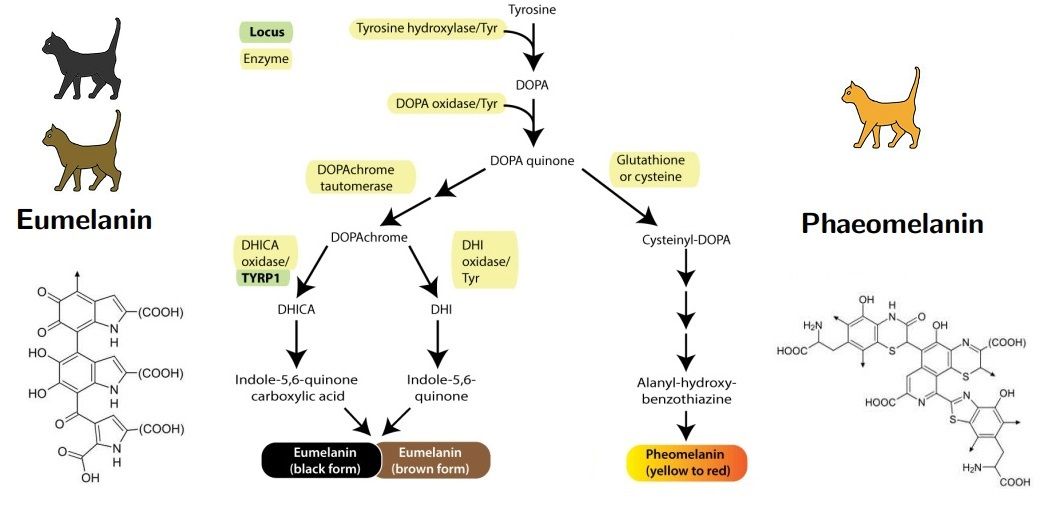
BASIC GENETICS OF EUMELANIN (BLACK/BROWN PIGMENTS) AND PHAEOMELANIN (RED PIGMENT)
In cats there are two types of pigment - eumelanin and phaeomelanin. Eumelanin creates the black-based and brown-based colours. Phaeomelanin creates the red-based colours. Other genes modify these two pigments to produce the wider range of colours.
Black-based and brown-based colours such as blue (grey), lilac, platinum, cinnamon, chocolate and fawn. Different registries and different breeds have different names for the same genetic colour.
Red-based colours are red, cream and apricot. Different registries and different breeds have different names for the same genetic colour. In random-bred cats these may be called orange, ginger, sandy, biscuit etc by their owners.
The diagram below shows the pathway that leads to the black, brown and red pigments and an example of each molecule. The molecules will differ when acted upon by other genes that dilute or modify these basic pigments into the wider palette of cat colours.

The genes for black/brown pigments and the various modifying genes (e.g. dilution) are all carried on the autosomes: the chromosomes except for X and Y. The gene for red is carried on the X chromosome, one of the sex chromosomes. This is why red cats are more likely to be male, and why almost all tortoiseshell cats are female (see Tortoiseshell and Tricolour Cats and Genetics of Tortie Tomcats.